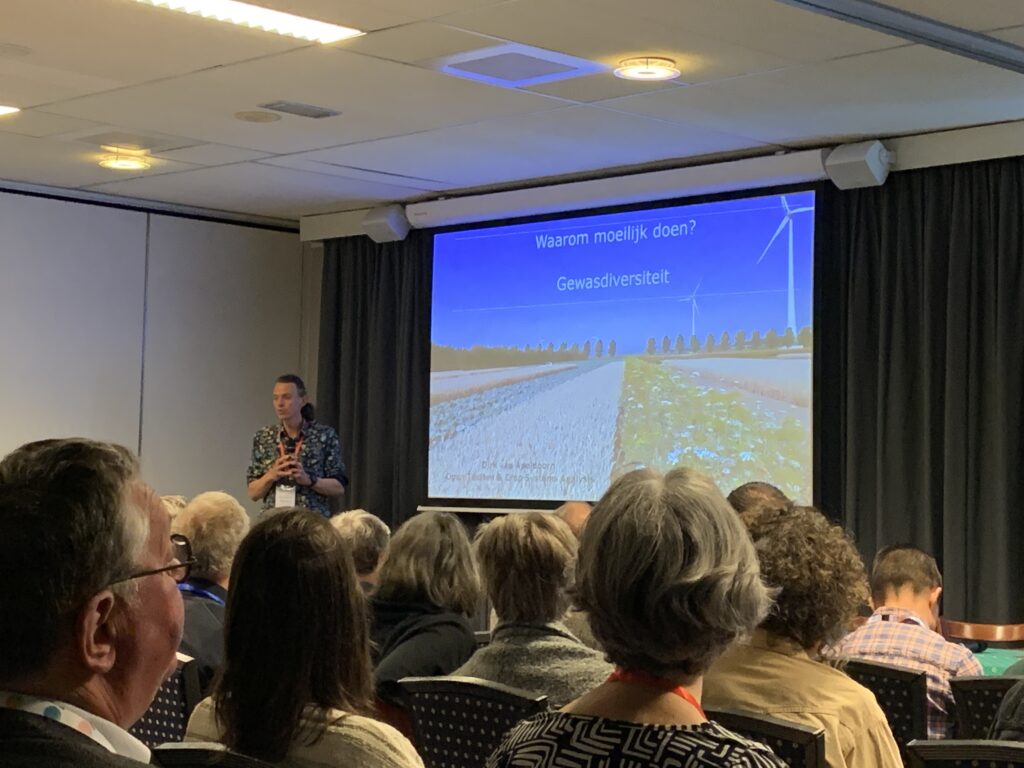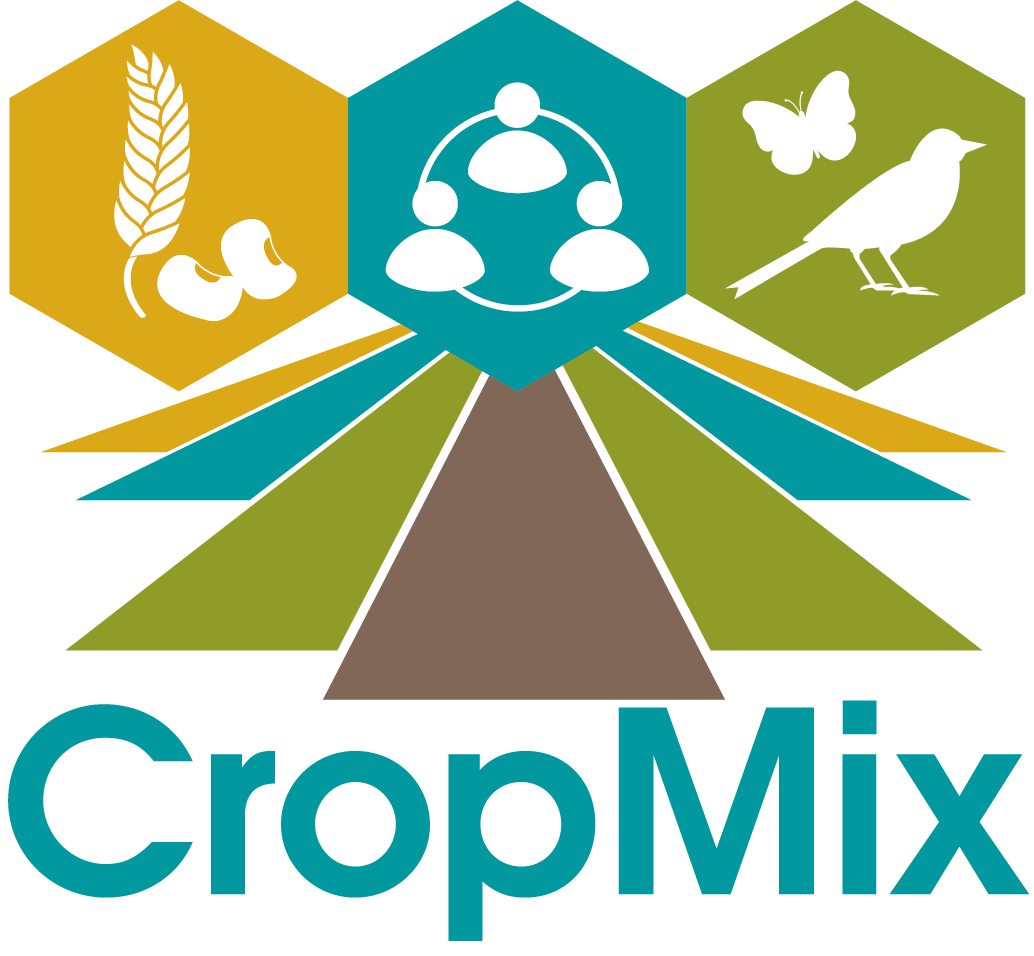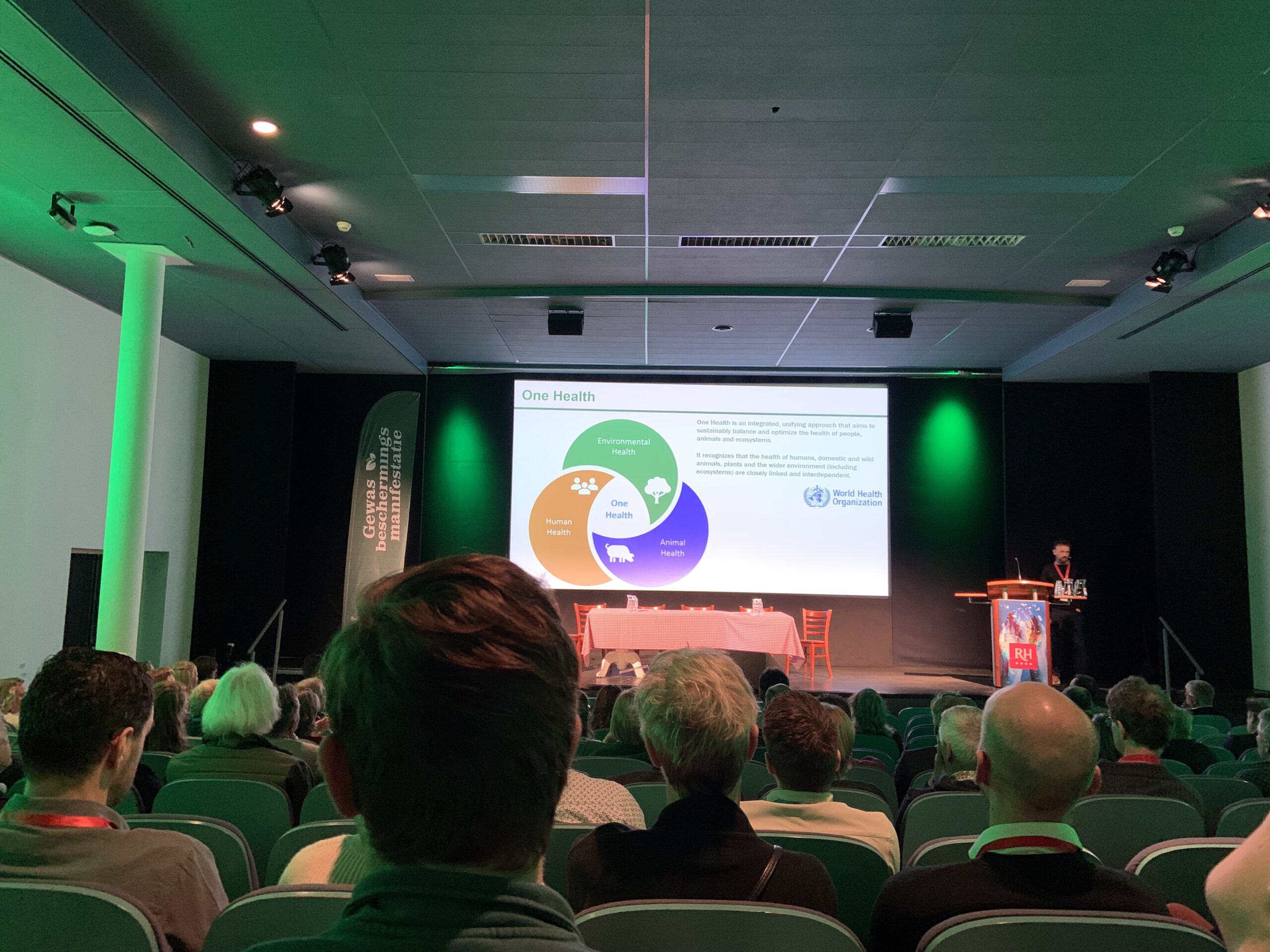On 13 March, the Koninklijke Nederlandse Plantenziektekundige Vereniging and Willie Commelin Scholten stichting organised The Crop Protection Event: Crop protection in a changing world - the ingredients for Integrated Crop Management. During the event, professionals from research, education, practice, business and policy came together for a day full of knowledge exchange and inspiration. At the kitchen table, various researchers and practical experts discussed the theme ‘Crop protection in a changing world’. What ingredients are needed for effective and sustainable integrated crop protection? Translated with DeepL.com (free version)
One Crop Health
After the opening by Leendert Molendijk (KNPV) en Ronnie de Jonge (WCS), it was the turn of Paul Neve from University of Copenhagen Department of Plant and Environmental Sciences. His keynote was about One Crop Health: re-imagining next generation crop protection, in which he called for collaboration between research disciplines to look at plant health from multiple angles. So not only looking at the plant, but also soil health and agroecology (crop diversity), as we are also investigating in CropMix.
Diversity in space and time
The day also included three parallel sessions with six speakers each: two from fundamental research backgrounds, two from applied research backgrounds and two from practitioners). Each speaker gave a short pitch on their experiences with integrated crop management. They then engaged in conversation at the kitchen table and responded to statements and questions from the audience.
The ‘Diversity in space and time’ session also featured our own Dirk van Apeldoorn, researcher at Crop Systems Analysis, and arable farmer Gert Noordhoff. Dirk showed that within strip cropping research, for example, some great results have already been achieved when it comes to biological control and Gert endorsed this story by showing that his 3-metre-wide strips suppress the spread of disease.
The other two sessions focused on the role of technology and of plant resilience. Several researchers and also entrepreneurs talked about possible solutions for growing healthy crops. Drones and sensors passed by, for instance, which can help in precision application of crop protection in, for instance, fruit orchards. Researchers from various universities and also breeding companies showed which processes can be used to further promote plant health, for instance by strengthening the natural defence mechanisms of plants via different hormones.
After lots of new information and networking, we closed the day with a playful act of jugglers who could teach us a bit about ‘the art of letting go’.

Want to know more or get in touch with Dirk or Gert? Email cropmix@wur.nl.


